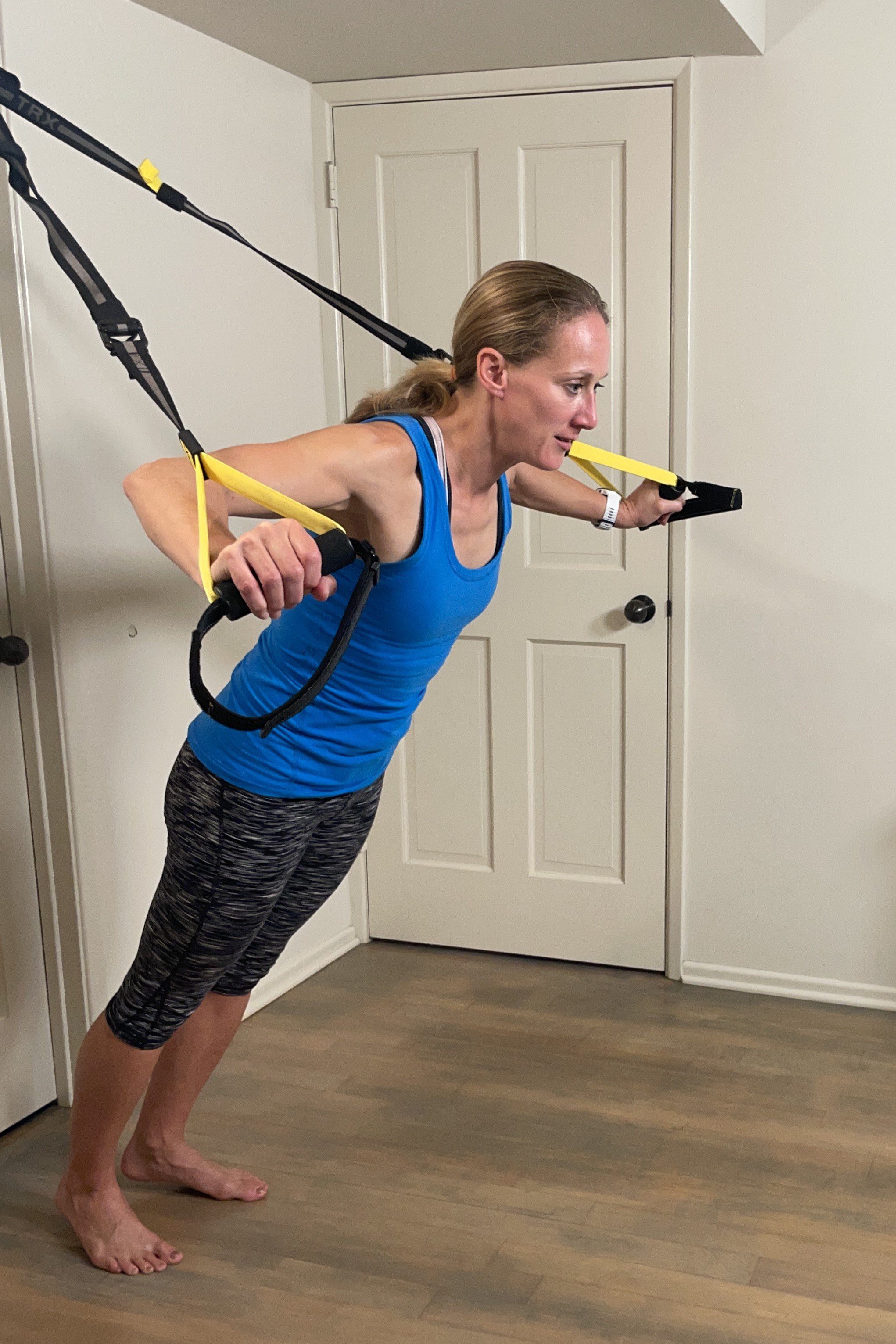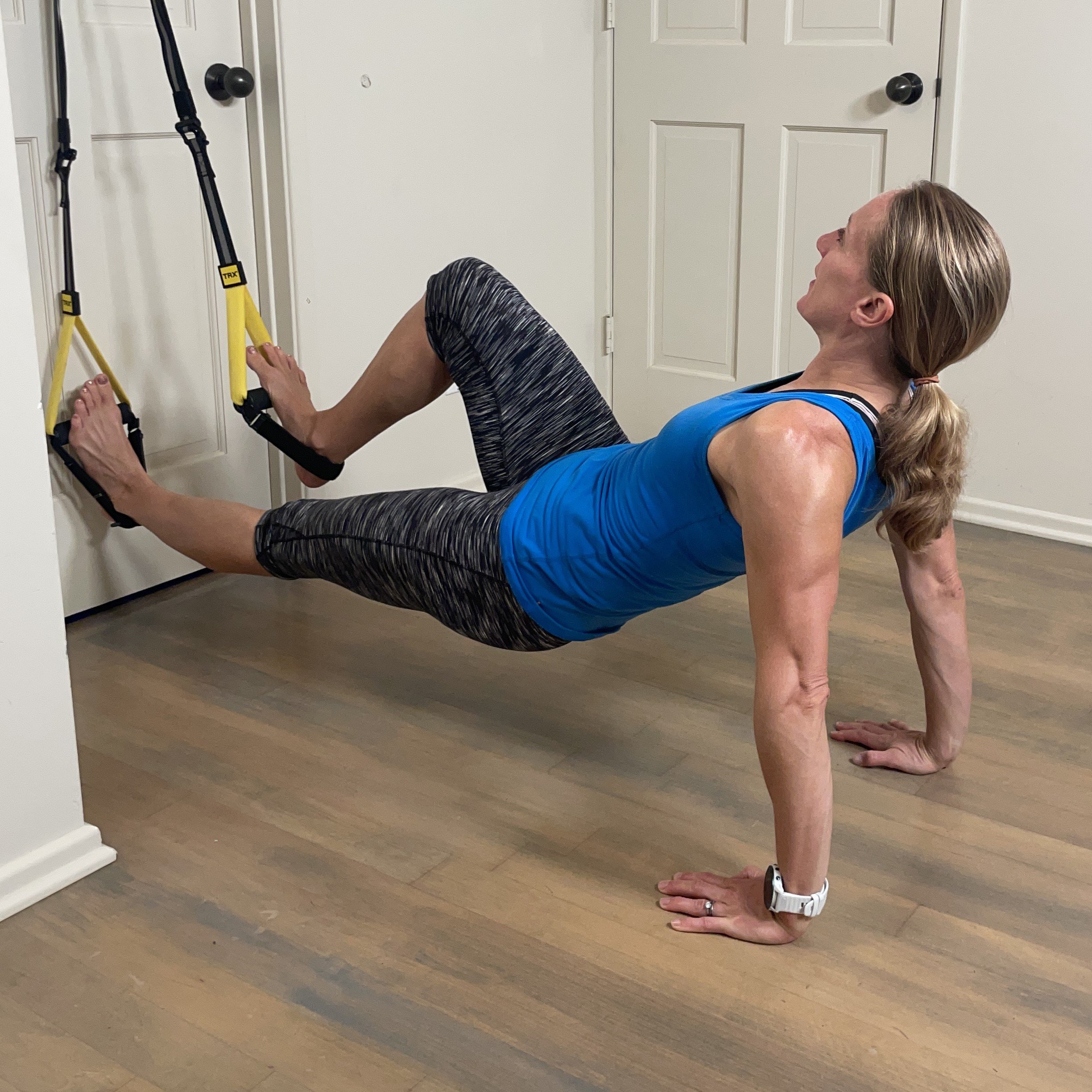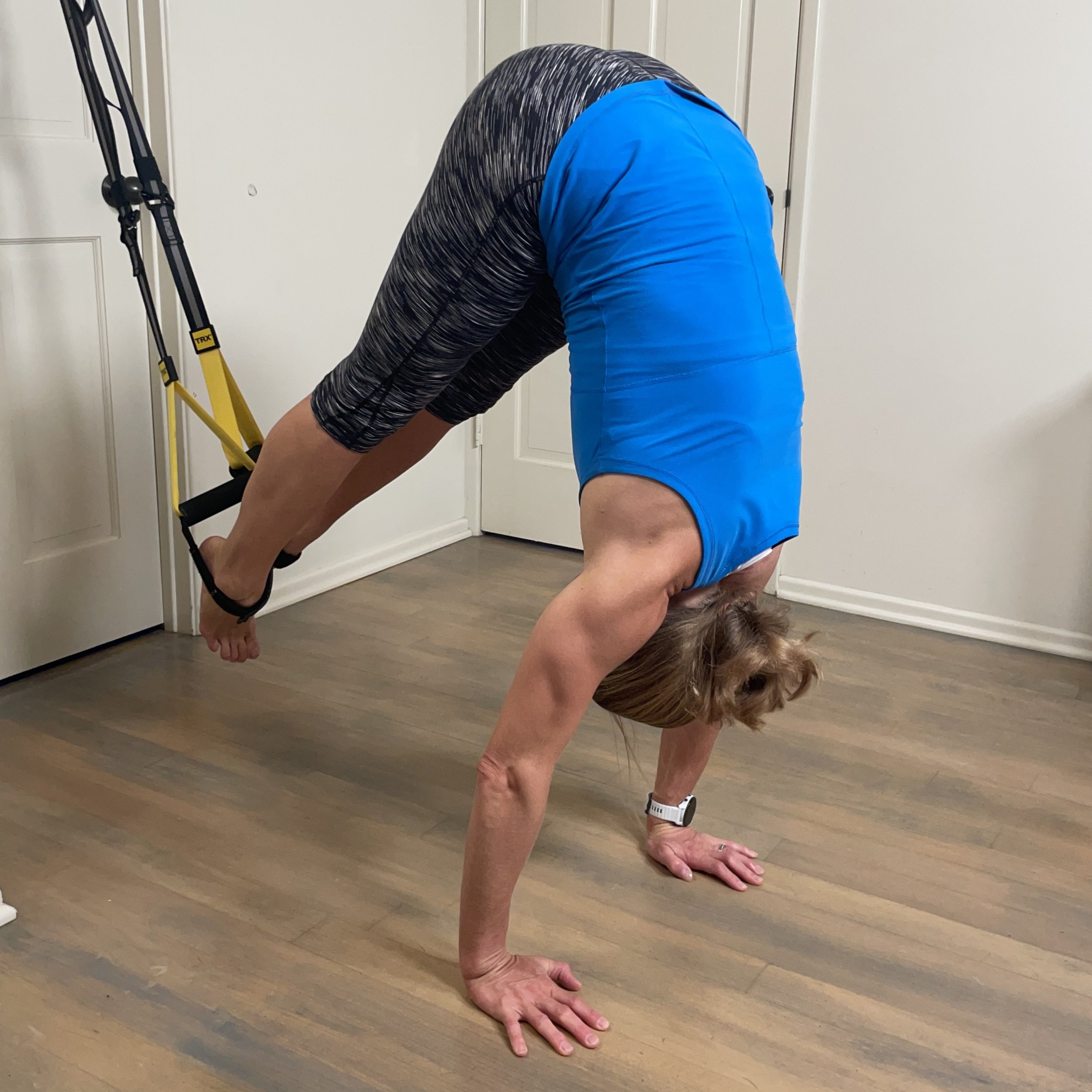Jane Reviews: TRX Suspension Trainers
Do you need some TRX help?
Chances are that you’ve heard of TRX suspension trainers or seen them in your local gym. Designed by a former Marine, these portable trainers consist of an adjustable strap system suspended from a wall, ceiling, or other high mount. By placing your hands (or feet) in the handles and setting them to various heights, you can perform bodyweight moves with added resistance and instability.
I’ve seen the TRX used for everything from yoga and HIIT to improving your golf swing. And TRX classes are always popular at the gym. But is it worth training with one? Right before the pandemic hit, I bought one so that I could learn about the modality and expand my fitness repertoire. Below are my thoughts on the suspension trainer. (Note: I will discuss the version I bought which is the home version.)
Intro: The home version (Home2) comes with the suspension trainer, door anchor and a general suspension anchor, which will allow you to mount in a door (duh) and around narrow poles (horizontal or vertical), respectively.
What you get in the Home2 TRX set
The TRX can be used for a range of upper and lower body exercises. These moves are created by one of four general body orientations:
1) hands holding the handles, body facing the anchor point
2) hands holding the handles, body facing away from the anchor point
3) heels in the foot cradles, body facing upwards
4) toes in the foot cradles, body in plank position/downwards
(There are some exceptions, of course, but this covers a lot of them.)
What I like: Once you’ve chosen your anchor point, setup is pretty easy; I can typically set up my system in less than 90 seconds. Also, TRX suspension trainers are lightweight and portable. The Home2 model weighs 1.5 pounds, and although it’s not as compact as, say, resistance bands, it won’t take up too much room in your bag or suitcase.
The inherent instability of the system requires you to activate your core to keep the movements solid and steady. Thus, you get an extra core workout with every exercise. For the record, the ground moves are SUPER challenging, which for me is a total plus! (Because I’m evil that way. Muahaha!)
Finally, I like how you can easily adjust the resistance for your skill set by simply moving closer to or farther away from the anchor point. This is great in particular for upper body movements if you’re trying to build strength without a lot of weights; moving your feet slowly in or out (depending on the exercise) can allow you to fine-tune the resistance better than with a weight rack.
What I find to be meh: The TRX system is not cheap. The Home2 model costs (at the time of writing) $200 and costs even more for the more rugged “pro” models. If you plan on using your new TRX all of the time, that’s a worthy investment, but it can be discouraging if you’re just casually interested in trying it out. If you want to mount your TRX around a large pole—or, say, a wide tree trunk—you’ll need to buy an Extender—as of this writing it’s sold out, harrumph!—or upgrade to the Pro version. And if you want to mount directly to a wall or ceiling, you’ll need to buy and install an Xmount, which runs you an extra $40.
A TRX out in the field, using a large tree trunk as the anchor point.
I couldn’t fit my suspension anchor around the tree, but luckily I had a spare and could put both to use.
If you read the manual (I know, who does that, right?) it talks about setting the proper height of the system relative to the ground. I find that for door mounts this information is pretty much useless unless you happen to have a super-tall door. Chances are your door will be too short for you to meet their requirements. I just ignore them.
There is also a lot of discussion about adjusting the strap lengths depending on the move. I find that the TRX folks make the strap stuff needlessly overcomplicated. Half the time, the strap length doesn’t matter that much if you just shift yourself towards or away from the anchor point, and the other half of the time, it’s not even relevant, especially if you’re mounted in a door.
There will be times when you do need to adjust the straps at least a little, though. And that takes time. If you’re performing a circuit with quick changes, you can lose a lot of time fiddling around with strap length. So plan your workout accordingly.
What I’m not crazy about: For most setups, I find the number of moves that you can do with a TRX fairly limited. For example, there’s only one real way to do, say, a bicep curl or a chest fly. There are a lot of cool moves that you can do if you can get under the anchor point (with a ceiling mount or from a horizontal bar), but for most of the places where I set up, I’m either mounting around a pole or tree or in a door. I will say that there is some cool stuff on the TRX Instagram, but in practice a lot of the moves they highlight are compound moves that can be difficult to learn quickly and perform with good form. (But if you’re a TRX pro, by all means go for them!)
For lower body moves where you are upright—ie, squats, lunges, hip hinges—you’re basically just holding on while performing bodyweight moves…there can be an increased challenge for cardio and core work, but you’re kinda limited resistance wise. If you’re looking to build muscle mass in your lower body, you’ll max out pretty quickly with this system. I’ve been to a lot of TRX classes in the past where they pair the TRX moves with weights, probably for just this reason.
Side lunge with TRX: necessary?
As I mentioned above, the TRX requires a lot of core engagement to stay stable. You also need good body awareness to maintain a solid, neutral position while performing a lot moves, particularly for the upper body. Absolute newbies to exercise may not have that body awareness, and form issues can lead to injury if they’re not careful.
Finally, sometimes your heels can slip out of the foot cradles if you’re not careful. And slipping your toes in the cradles for plank position can be harder than the move itself!
Getting into plank: welcome to the struggle bus
THE TAKEAWAY:
Should you buy a TRX? Personally I think it’s a good investment if you think you’ll use it often enough and your goal is general fitness. Here are my recommendations:
Most recommended for: Intermediate to advanced level exercisers that want:
A lightweight and portable system to work out anywhere
A way to increase core engagement during their workout
A way to build upper body strength without using weights
A full body strength and/or cardio workout
Not recommended for:
People who want to build massive lower body strength - use weights instead!
People who do not have good core control or body awareness - work on mastering basic moves off the TRX first to prevent injury
People who want lots of strength training variety in one modality - you may get tired of the “standard” moves
Do you have other questions about TRX systems? Do you agree with my assessment? Do you love your TRX? I wanna hear about it—comment below!










